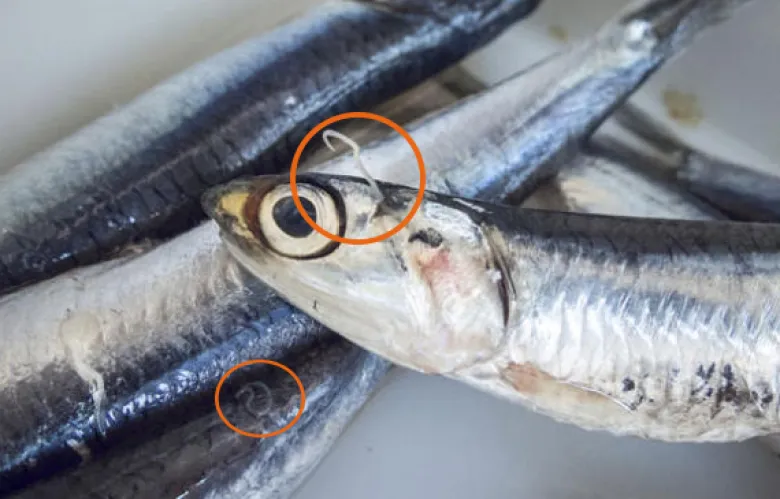Anisakiasis is a digestive disorder that can lead to an allergic reaction caused by the consumption of fish affected by a parasite living at sea and whose name is anisakis. When we consume infected raw fish or its preparation has not been enough to eliminate it, this small parasite ends up in our digestive system. Here we discover the symptoms of anisakis, the causes and treatment, take note.
Causes of Anisakiasis
Anisakis is a parasite that can be present in the varieties of fish we frequently consume. It affects humans when we prepare this fish raw, when we cook it minimally, or whenever we smoke or marinate it.
Symptoms of anisakiasis
Symptoms occur within 24 to 48 hours. After intake of contaminated fish, we tend to suffer episodes of gastroenteritis with the following reactions: vomiting and nausea, diarrhea, stomach pain, and even allergic reactions.
In anisakiasis, it is not very common for allergies to occur with episodes of hives. However, when this happens, it manifests itself at the time of eating the contaminated fish. In this case, it is necessary to see a doctor and receive appropriate treatment. Otherwise, it could lead to more serious anaphylactic shock.
Diagnosis
After a person goes to the doctor with symptoms like those described above, the diagnosis is usually quite clear. When this happens, a high level of white blood cells or eosinophils appears in the blood, typical of the symptoms of infection caused by allergies and parasites. A simple analytics is enough to detect them.
Regarding the detection of the anisakiasis parasite in our stomach and duodenum, the most commonly performed diagnostic methods are upper gastrointestinal endoscopy and biopsy. An X-ray of the digestive tract can also be performed to locate the anisakis, although this is a less common option.
Treatment to eliminate anisakiasis
To eliminate the pain and discomfort caused by this parasite, such as intestinal irritation, the best option is the use of antibiotics. If the person concerned has allergic symptoms, the use of antihistamines and corticosteroids is the most effective treatment in mild cases.
When the parasite is housed in the mucosa of the digestive tract, something we can see in high digestive endoscopy, the situation may be complicated if the removal of anisakis is delayed, which could lead to intestinal obstruction or peritonitis. In these cases, specialists usually resort to surgery.
Prevention measures
–Buy clean, gutted fish, or at least remove them as soon as possible.
– Use preparations that remove the parasite as frying, boiling, grilling, or baking.
– Crustaceans such as shrimp, prawns, lobster, spider crab, crab, or crayfish should be eaten cooked or grilled.
–Freeze the fish if you want to eat it raw or use gentle techniques that do not destroy the parasite.
– Keep the product frozen for several days at a temperature of -20°C or less.
Not all fish need to be frozen, but these are the specialties we usually prepare at home that need it most: anchovies in vinegar, sushi or similar, marinated fish or ceviche, pickled fish, herring and fish in brine, cold-smoked fish, or raw or semi-raw fish roe.
Bibliography
Palomo, J. J. Anisakis, causes, symptoms, and recommendations. The route of entry of the anisakis takes place after the intake of raw fish, in salt, marinated, smoked, or slightly cooked.
Valls, A., Pascual, C. Y., & Stephen, M. M. (2003). Anisakis and anisakiosis. Allergologia et immunopathologia, 31(6), 348-355.

